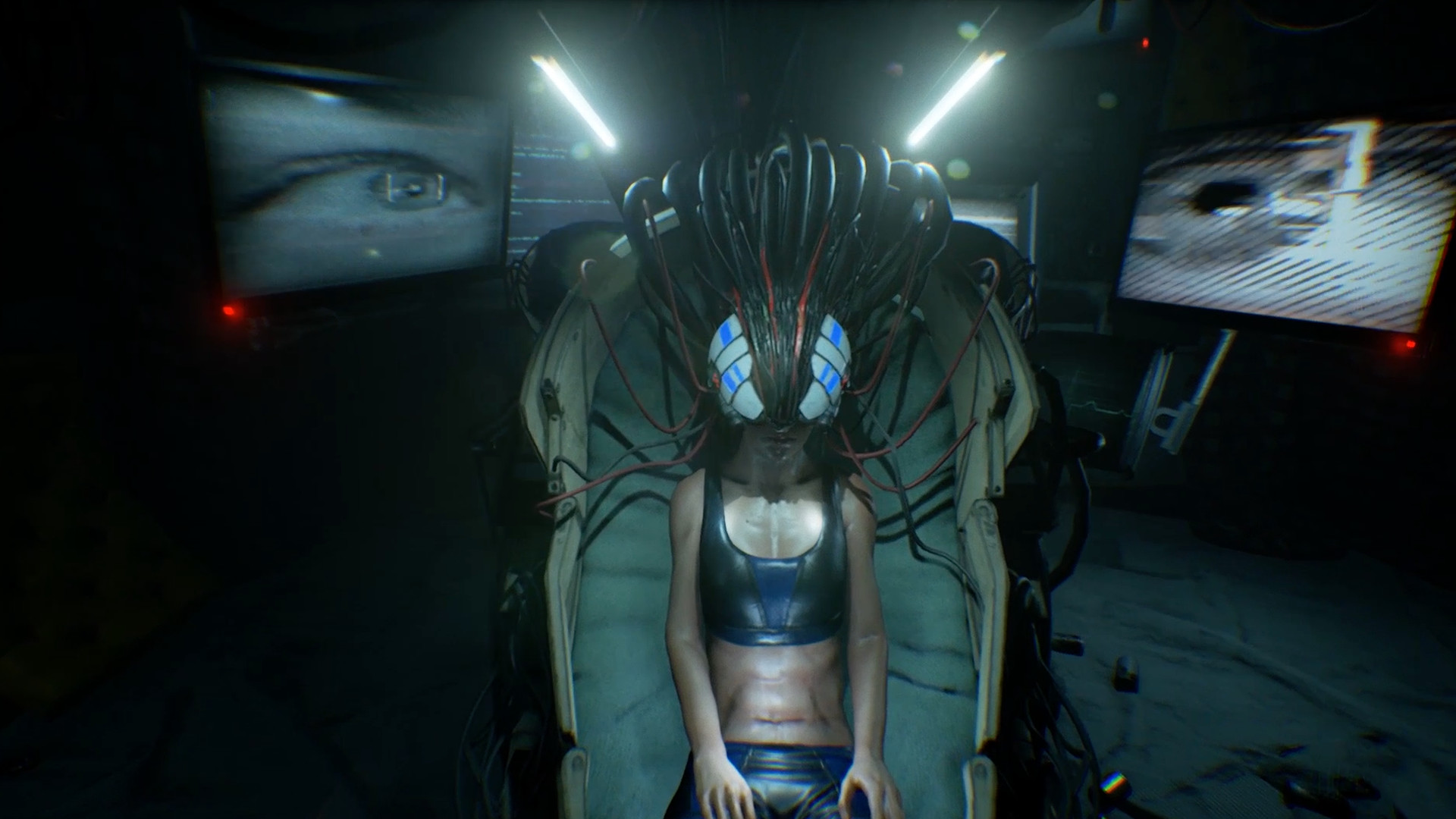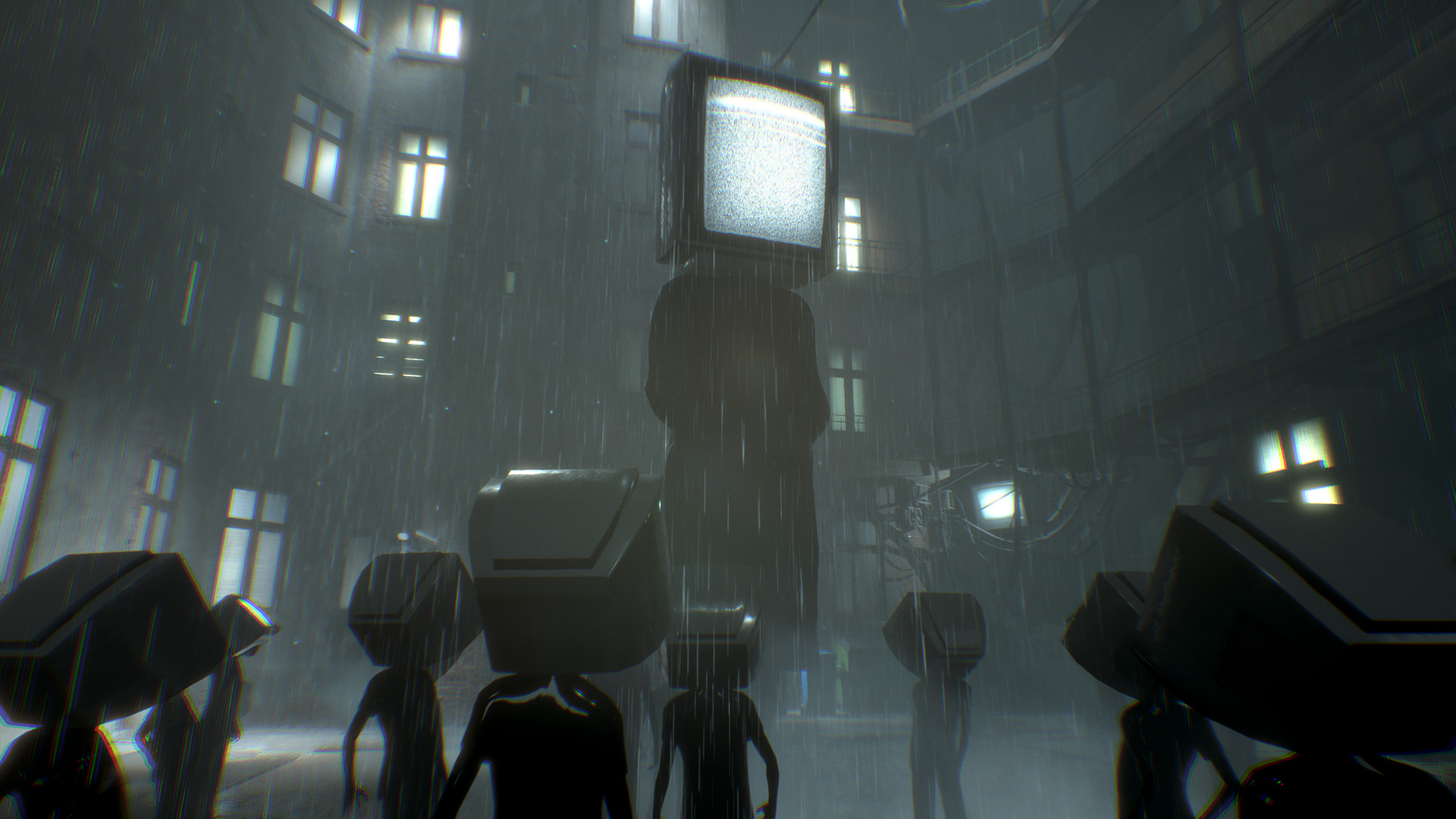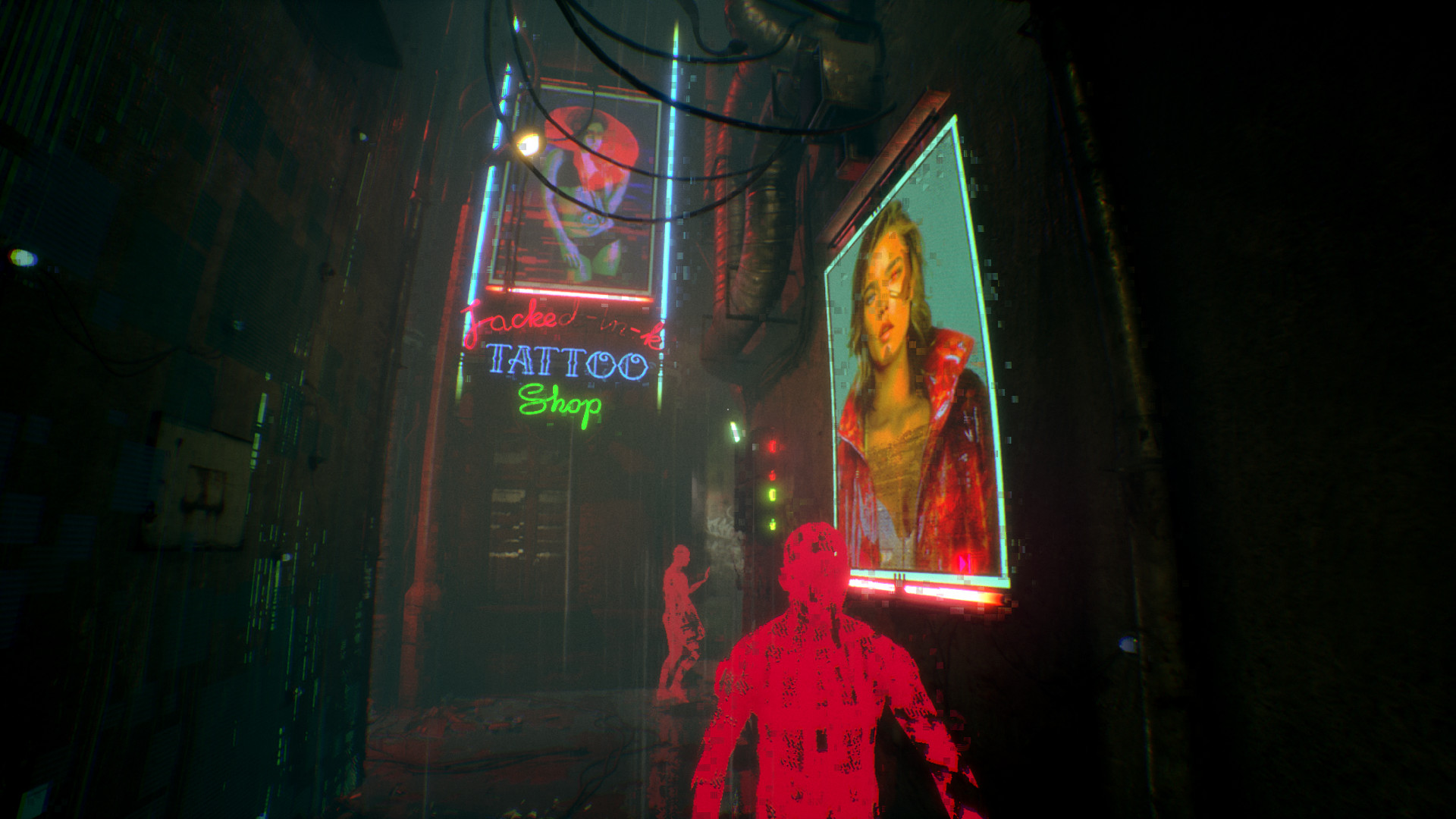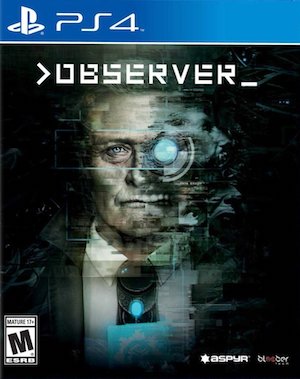
Horror is in Bloober Team’s blood. Even after the ill-fated Basement Crawl, the developer took stock and released Layers of Fear, a P.T.-esque first person horror title with a painter gone mad. The admirably insane art-style, which meshed well the “mad painter” motif, helped elevate a very traditional and at times derivate experience to a full-fledged horror game. Observer, then, would be a more complete gameplay experience but more importantly, one hoped that the developer would use this opportunity to evolve its approach.
Unfortunately, that’s not the case. Observer does have a compelling aesthetic within its cyberpunk future of surveillance, techno-organic viruses and augmented monsters. However, it suffers from the lack of a compelling protagonist, some odd game design choices that can lead to frustrating gameplay and a presentation that’s more about crazy for crazy’s sake.
"At one point, Daniel himself starts breaking down and it seems like his reality is being intermixed with his suspects’ memories."
You’ve probably seen this version of the future for mankind – or Poland where the game is set, so this assumes that Cyberpunk 2077 really did flop. Anyway, the world has been ravaged by a virus called the Nanophage which targetted augmented humans. A war also erupted between “the East and the West” with the megacorporation Chiron ultimately rising to power. Thus was the Fifth Polish Republic formed and a dystopian society addicted to virtual reality, drugs and augmentation was born.
Players assume the role of Daniel Lazarski, an Observer whose job it is to view a person’s memories by hacking into their neural implants. Things get a little complicated when Daniel receives a message from his son after a long time. He traces the call to the Stacks, your typical impoverished apartment society, and finds a body or two for his investigation. Not willing to believe his son has been killed and the building in lockdown, Daniel embarks on an investigation, hacking the minds of both living and dead suspects.
Though Observer‘s initial art-style is all grimy, neon-infested backdrops, it doesn’t take long before players hack into a suspect’s mind and explore environments ranging from trite Chiron office buildings and tattoo parlours to art galleries and worn-down prisons. What allows for some of the more mind-bending experiences is the fact that Daniel actually relives the suspect’s memories albeit in a more chaotic, maelstrom of thoughts, symbols and key events. One set of memories could see the environment torn apart continuously while another requires you to evade a hulking augmented beast using stealth.
At one point, Daniel himself starts breaking down and it seems like his reality is being intermixed with his suspects’ memories. You may relive interactions with Daniel’s son or enter an endless foggy forest that must be navigated with your augmented vision. It’s interesting but so many of the scares at this point are fairly played out. A pigeon jumping out at you or SUDDEN LOUD NOISES can only be so scary and if you’ve already played Layers of Fear, the reality-bending of Observer will be more intriguing than terrifying. This isn’t to say there aren’t any disturbing sights but there’s nothing that really pushes the boundaries of horror like Outlast 2.
"The odd stealth portions provided some much needed tension in the atmosphere which unfortunately gave way to more LOUD NOISES."
As for the augmented vision, when Daniel isn’t entering another’s mind, he’s investigating dingy environments to unlock clues. This can be done with Electromagnetic Vision, which scans electronic equipment, or Bio Vision which can scan for blood spatters, injuries and so on (Night Vision comes into play at one point but that’s a bit more situational).
The investigative premise feels a little half-baked – it’s used to simply glean information about victims, thus triggering further dialogue and observation until you find an implant and hack in. Furthermore, while the 70s sheen of the augmented vision is a nice little retro-future touch, it can become positively irritating on your eyes in the initial stages. Perhaps it shouldn’t have acted as a “sonar” and rippled every few seconds. Then again, if it didn’t, you wouldn’t be able to pull off that exceedingly annoying endless forest puzzle of “take a few steps, wait, take a few steps, wait, ad nauseam”.
The same goes for the game’s “artefact” aesthetic. When levels change or insanity ensues, the game seemingly starts glitching out and throws in all these compression artefacts to convey the same. Used more subtly, this could have meshed well with some of the lighting and mood pieces showcased. But when piled on this heavily, it just becomes repetitive and renders you numb. It doesn’t make the jump scares any more frightening and actually interferes with admiring the environments and their crazy happenings.
The game has some jarring pacing from time to time. It’s nothing too snappy but can definitely drag at some points, like when trying to find that one code for that one door (pro-tip: Hack it and guess the numbers, even if two out of four are missing). Then when hacking into a suspect’s implant, the game becomes a mix of fast-paced transitions and running across crumbling environments and compression artefacts. The odd stealth portions provided some much needed tension in the atmosphere which unfortunately gave way to more LOUD NOISES.
"In terms of variety, Observer definitely has more to do than Layers of Fear. It’s the execution of these ideas and the stumbling of what made Layers of Fear so compelling that ultimately drags it down."
As disturbingly beautiful as the worlds of Observer can look, as trippy as some of the melding between technology and flesh can be, it doesn’t help when the voiced protagonist sounds half-asleep at random intervals. Rutger Hauer’s portrayal of Daniel Lazarski is meant to come off as old, somewhat-cynical, somewhat-tired, somewhat-gruff but at times can feel dull. His range only really seems to pick up when his reality starts to become distorted but it’s extremely telling when the portions he doesn’t speak are better than his conversations with tenants or narration of observations. Other aspects of the sound are handled well though over-used elements like the television that cries like a baby or the LOUD blaring when “Don’t lie to us” flashes in a memory can wear on you after a time. That’s more a design decision though so allocate your blame according;y.
In terms of variety, Observer definitely has more to do than Layers of Fear. It’s the execution of these ideas and the stumbling of what made Layers of Fear so compelling that ultimately drags it down. Flashes of brilliance are definitely there and there’s a certain appeal in dropping further down the rabbit hole to see what horrors await. In terms of story-telling, despite the mystery, there’s the concepts of authoritarian corporations, gruff investigators, futuristic conspiracies, experimenting and augmenting humans to turn them into monsters and whatnot that’s beyond worn-out at this point. It’s probably not a good thing when I see graffiti on the wall that goes “Nanophage was planned” and can’t help but respond, ”Yeah, probably” more duly pressing on.
As an entry into horror titles, Observer is a decent game, one that will frustrate at times with either its gameplay or presentation. It’s definitely a good segue-way to Layers of Fear before graduating to the big leagues of horror like Outlast, Amnesia: The Dark Descent, SOMA and heck, even The Cat Lady. If you’re expecting something bigger, better or different than Layers of Fear, then Observer may leave you wanting. Then make you switch visions to really accentuate the wanting before artefacting like a bad video tape to showcase all the obvious layers of symbolism.
This game was reviewed on PC.
Art-style is evocative of an Eastern European cyberpunk dystopia. Stealth portions break up the action in interesting ways. Investigations offer more variety in between horror romps. The sheer sensation of experiencing a victim's broken mind on fast forward is compelling.
Story is cliched in a number of ways. Augmented vision can be annoying, especially in that one forest puzzle that requires it. Jump scares and sudden loud noises take away from the creepy atmosphere. Compression artefact effects become very irritating. Lead voice actor can be dull.




















